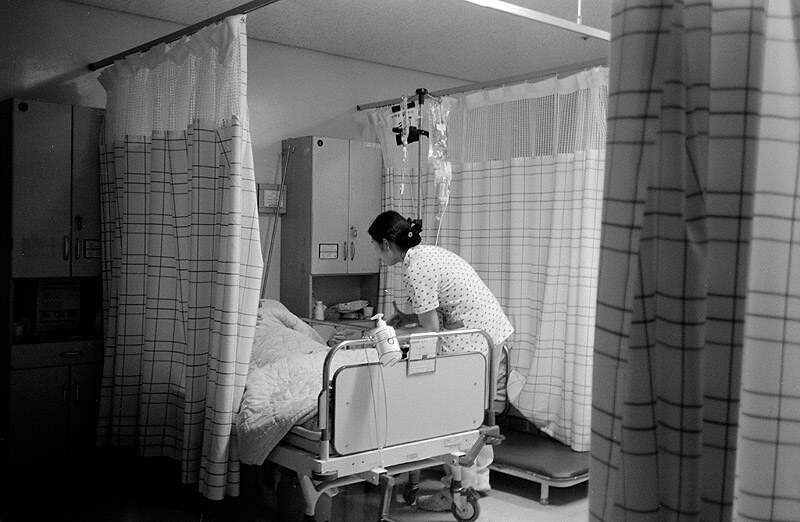The following story appears in the February issue of The Business Monthly serving Howard and Anne Arundel counties, and is used with permission.
By George Berkheimer
PHI (formerly the Paraprofessional Healthcare Institute) estimates that direct care workers deliver 70-80% of all long-term care and professional assistance in the United States.
Personal care aides, home health aides and certified nursing assistants (CNAs) constitute one third of the total health care workforce and currently provide assistance to 15% of Maryland adults aged 65 or older.
Demographic changes and a rapidly rising senior population in Maryland are driving the demand for these workers, but they are in such short supply that the Maryland Regional Direct Services Collaborative (MRDSC) has declared the situation a crisis.
Housed within the Rodham Institute at the George Washington School of Medicine and Health Sciences in the District of Columbia, the Collaborative defines its mission as assuring the availability of trained direct services workers across Maryland and the District of Columbia and is leading the effort to address the shortage.
Chronic churn
According to Ron Carlson, executive director of the MRDSC, the growing demand for long-term care means that Maryland will need 40% more direct service workers by 2024, but recruitment and retention present huge challenges.
For starters, the duties are emotionally and physically demanding, advancement opportunities are scant, and workers rarely earn more than minimum wage. According to a MRDSC fact sheet, one tenth of the Maryland direct service workforce lives in poverty, and 43% rely on some form of public assistance.
“People going into these jobs are [typically] coming in from at-risk areas of the state,” Carlson said. “Many have not graduated from high school, and employment draws very heavily on the immigrant population.”
The retention statistic provided by Kevin Heffner, president of the Columbia-based LifeSpan Network that represents an association of about 340 senior service organizations, is drastic.
“This is a generalization, but in Maryland the turnover of direct care workers in nursing homes is 100%,” he said.
To draw attention to the problem, the MRDSC has launched an awareness campaign for 2020 and is advancing policies to improve direct service worker wages and benefits, address workforce vacancies and shortages, and reduce turnover.
It is also pursuing regional policies to remove employment barriers and support workforce training.
Legislative remedy

Sen. Guy Guzzone
The MRDSC has found a partner in State Sen. Guy Guzzone, D-Howard, who is sponsoring new state legislation this year resembling the national Direct Care Opportunity Act advanced by Congressman Bobby Scott of Virginia last year.
Guzzone’s legislation, the Direct Care Workforce Innovation Program, SB449, would support training and career pathways via local innovation to address workforce shortages, and would establish a $250,000 innovation fund available to community-based organizations that help enhance the recruitment or retention of direct service workers, be it through training, transportation assistance, or some other means.
The innovation fund would enable matching grants of up to $50,000 for eligible nonprofits.
Trying to leverage money during a year when all of the attention is on Kirwan Commission recommendations and funding could be risky, but Guzzone, who chairs the Senate Budget and Taxation Committee, doesn’t think it’s impossible.
“We’re giving an extra review to anything with a price tag of $250,000 or more, and this proposal falls in at exactly $250,000,” he said.
Guzzone wants the legislature to take the direct service crisis as seriously as he does, likening it to the behavioral health causes he champions.
“It’s another component of something critical that we need in our communities,” Guzzone said. “We’re in a tough economy and it’s a challenging time to accomplish this, but all of us are likely to need some support of this nature at some point in our lives.”
Chipping away
Direct-care jobs are readily accessible, Carlson said, requiring but 70 hours of training to meet the CNA requirements determined by the Board of Nursing.
“The Howard County Public School System’s Academy of Health Professions provides this training and students get a certificate at the end of the course,” he said. This is soon to be joined by a model apprenticeship program launching in 2020 via a partnership between public school systems and health care providers in the Baltimore area.
In exchange for tax-exempt status, nonprofit hospitals are obligated to offer certain benefits to the communities they serve, and that may be another way to make headway on the direct care worker shortage, Carlson said.
Insurance plays a minor part in the crisis, with third-party payer programs either declining coverage or limiting the number of service days. It’s also not uncommon for employees to miss work to assist elderly family members who can’t afford private long-term care policies, which gets the attention of employers.
“HR directors and business directors know we’ve got to tackle this because it has a significant bottom line impact on worker availability,” Carlson said.
“This is such a macro issue that everything we do, even though it may have a small impact, is chipping away at the stone,” Heffner said. “We’re not going to find a panacea to Certified Nursing Assistantsfix this national level issue. It’s hard work and all sorts of programming and innovation that are going to help put a dent in things.”




Recent Comments